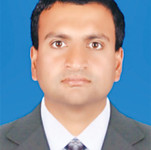
We use Google Cloud Translation Services. Google requires we provide the following disclaimer relating to use of this service:
This service may contain translations powered by Google. Google disclaims all warranties related to the translations, expressed or implied, including any warranties of accuracy, reliability, and any implied warranties of merchantability, fitness for a particular purpose, and noninfringement.

Highlights
- To address road accidents, it is necessary to do five things: improving roads, improving driver knowledge, skills and attitudes, checking the condition of vehicles and developing and enforcing appropriate laws. It is equally important to create a rescue mechanism after an accident. If you can pay attention to this work immediately, the number of accidents will decrease.



One of the most visible news in the media in Nepal is traffic accidents. Recent accidents confirm that road to air transport is not safe here. However, such accidents are not new for Nepal.

According to statistics, there were 35,404 vehicle accidents in the last financial year, in which 2,368 people lost their lives, 6,160 people were seriously injured and 25,996 people were injured. Some of the seriously injured died during treatment, which is not included in the statistics. In our country, 3000 people die every year due to road accidents. There are 6.2 million registered vehicles in Nepal with a road network of about 1 lakh km.
Of the roads in the country, only 23,000 kilometers have been built under the road department, while other roads have been built without standards. This data shows how risky our journey is. We all know that such weak and dangerous road network is becoming the main cause of accidents. Although the story of
accidents has been the same in Nepal for decades, this trend has been increasing in recent years, which has worried everyone. But no concrete program seems to have come from the state to address this challenge of accidents. The government recently formed a task force to investigate the two fatal road accidents at Simaltal on the Prithvi Highway. The working group submitted the report to the government, but the government is not clear on what to do next.
After such accidents, the government issued a statement and expressed condolences to the families, but no one seems to be serious about what should be done to prevent such accidents from happening in the future. Some people's families are ruined by such accidents, which lead to the loss of precious lives and some of them have to spend their whole lives with disabilities, which is also seen as a social problem. The story of such social problems and the mental pain of the deceased's family is different. Paying attention to this is still a distant thing. We find that there is neither study nor seriousness to solve the problem from the government level.
If you look at the international level, the United Nations has explained 5 steps to reduce road accidents. These are: road safety management, safe roads, safe vehicles, safe road users and post-accident rescue. The United Nations believes that road safety can be made effective if these 5 rules are followed. If road safety is effective, the death rate from accidents will automatically decrease. However, in Nepal, these five links have not been worked. That is why accidents are increasing instead of decreasing.
It is necessary for poor and developing countries to make many improvements in the five pillars set by the United Nations. If nothing is done in this regard, the death rate is sure to increase along with the increasing speed of vehicles. According to data from the World Health Organization (WHO), the economic impact of road accidents is comparatively lower in poorer countries. 1 percent of gross national product in low-income countries, 1.5 percent in middle-income countries, and 2 percent in high-income countries. In this way, the accident is causing financial loss as well as human loss. If such damage can be avoided and safety can be improved, it would help in reducing accidents.
road safety measures
Roads are mainly monitored by the Ministry of Physical Infrastructure Development and Transport, Road Department, Transport Management Department and Traffic Police. The ministry has hundreds of projects. From road construction to busy road management and maintenance is the major work of the road department. Therefore, the road department is not fully responsible for road safety. The Department of Transport Management carries out vehicle registration, license renewal and other checks. Therefore, it is not fully responsible for road safety. The job of the traffic police is to enforce the rules and punish those who don't follow the rules. There is a lack of 24-hour road safety monitoring agencies in Nepal.
So now a road safety board or road safety council should be formed. In other countries, it is under the Ministry of Transport or Road Safety. Or the road safety agency is a different agency. Nepal also needs a similar structure now. This board/council should take responsibility for overall road safety. It should be given a goal. Experts should be placed in such a council and by appointing them there security initiatives should be taken forward using their expertise. To break the story, the Road Safety Council was formed in 2073 under the chairmanship of the Secretary of the Ministry of Physical Infrastructure and Transport in Nepal. But it could not do anything. When the secretary is the chairman, the main responsibility of building roads and the head of security are the same, the work cannot be effective. Learning from this, we should immediately move towards forming a powerful and independent council. A bill prepared to make a law on road safety council is pending in the Ministry of Physical Affairs. It is surprising that our leaders are not interested in it when it is not submitted to the parliament. As soon as this council is formed, it will not be like a magic wand, but if there is a 24-hour security monitoring body and knowledgeable staff, the situation cannot be improved. Europe, Africa, America and almost all Asian countries have such councils.
Mainly, five things need to be done to address road accidents in Nepal. Improvement of roads, improvement of knowledge, skills and attitude of drivers, maintenance of vehicles and development and enforcement of appropriate laws. Also, it is equally important to have a disaster recovery mechanism in place. If these five things can be paid immediate attention, accidents will be reduced in Nepal. All these things require will power in the state. If you have the will, it is not a big deal to gather the necessary financial resources and manpower for this.
Sweden's successful example
Today, the name of the European country Sweden comes as a successful and exemplary country in the world regarding road safety. In 1973, 1,177 people died in road accidents in this country and in 2022, that number decreased to 227. From this data, it can be assumed that Sweden invested a lot in road safety.
Sweden passed a law in 1997 for a 'Zero Vision' strategy. There are very serious measures taken for road safety. The two-way traffic was separated by a steel fence. Invested in road safety bar. Speed limit rules apply. Cameras were used on the road for monitoring. Seat belts, helmets were made mandatory and traffic lights were widely installed. The essence of 'Zero Vision' is that no one dies and no one gets seriously injured in a road accident. The government should create the necessary environment for this. After the implementation of 'Zero Vision', the state invested heavily in creating safe road infrastructure. In 1998, when the steel bar was used to separate the moving vehicles, 65 lives were saved that year alone. Many countries in the world have followed this strategy.
Nepal's main problem is road infrastructure. Road safety measures adopted by Sweden are simple and do not require much investment. Therefore, it does not mean that Nepal cannot do it. If Sweden can do it, Nepal should also do it. Other countries have also invested heavily in this, including Germany and Norway. Therefore, it is too late for Nepal to follow the successful practice of these countries to make road safety effective.
What to do immediately?
There seems to be a huge lack of road safety infrastructure in Nepal. However, it is not immediately possible to reduce accidents to zero. Firstly, the construction of road safety fence should be given priority for this. As most of our roads are in hilly terrain, it is common for the accident vehicles to fall down to 500 meters. At least if the road is barred, the risk of accidents going down the road will be greatly reduced. Secondly, a rule should be made to submit the certificate of suitability for the operation of every public transport to the transport office four times a year. This proves that the vehicle is in good condition. But the state cannot carry out vehicle testing.
Therefore, it should be carried forward in a public private partnership model through the private sector. Also, if it seems that there is a need to be strict while making the driver's license, training or orientation should be arranged for the driver from time to time by the government. It is also necessary to invest in vehicle monitoring technology. The traffic light sensor system should be installed on the road. Alcohol consumption (MAPSE) checks have been successful in Kathmandu Valley. It should also be applied to villages and highways in other areas.
The political leadership that does not work so much but scrambles to issue statements of condolence after the accident no longer has a moral basis to issue such statements.
– Gajurel is an infrastructure and transport expert.
 प्रकाशित : भाद्र २७, २०८१ ०७:४५
प्रकाशित : भाद्र २७, २०८१ ०७:४५

 २९.१२°C काठमाडौं
२९.१२°C काठमाडौं














